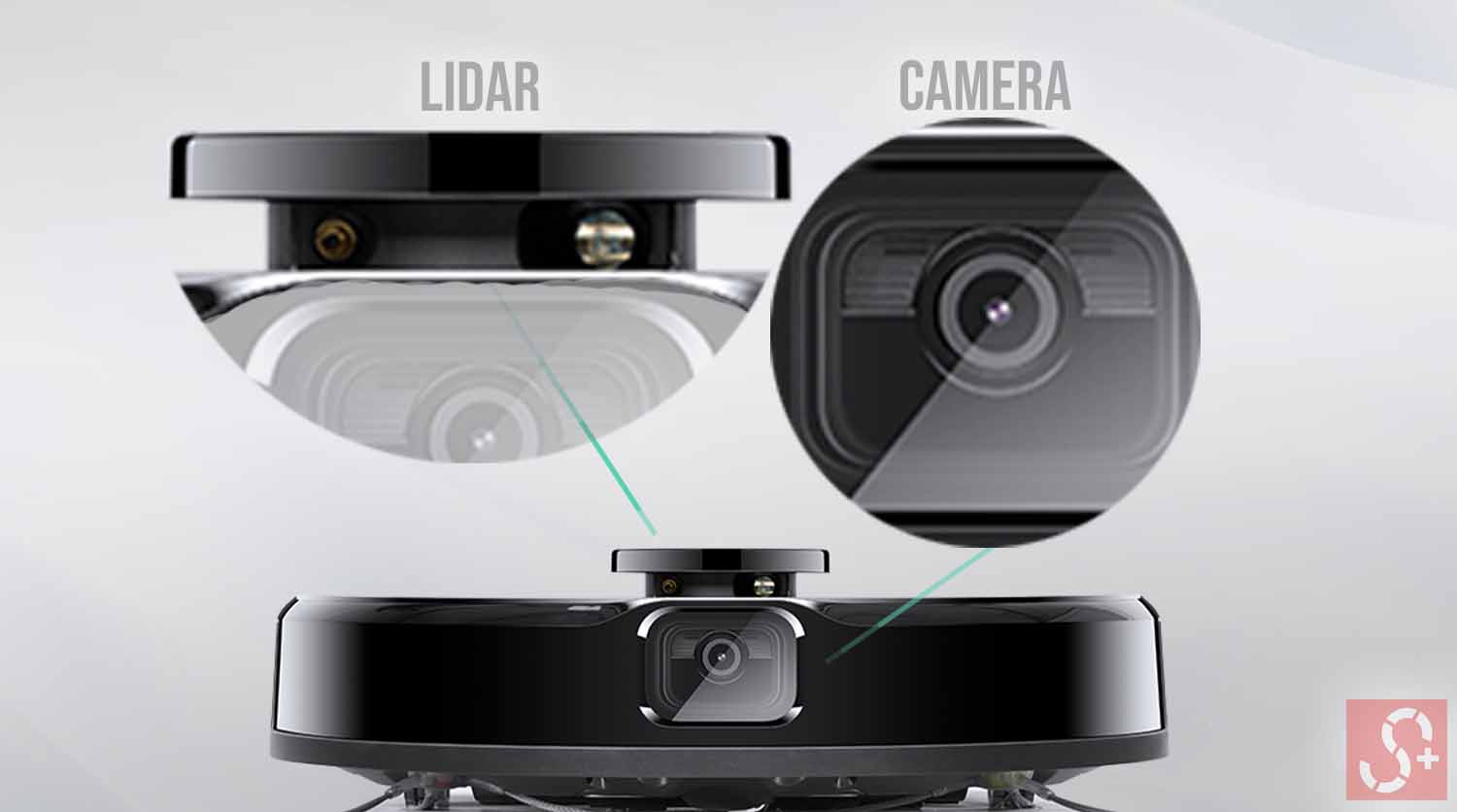Over the past few years, I’ve owned a variety of robot vacuums with several navigation technologies.
After spending thousands of dollars on some of the worst and some of the best robot vacs, not to mention watching countless hours of YouTube videos on how the tech works.
I ultimately discovered that robot vacuums that use a combination of lidar, camera, and collision sensors provide superior navigation over all other robot vacs.
These days I can not live without my Roborock s7 maxv ultra. Its exceptional navigation comes in handy for things like my son’s dinner time.
I’ve created several one-touch clean-up options around my son’s high chair for when he throws food all over the floor. This is a game-changer when it comes to clean-up time!
Below I dive into the nuts and bolts of both types of technologies, why they matter, and how they will save you money and time in the long run.
Robot Vacuum Lidar vs. Camera (Vslam): High-Level Explanation
Lidar (Light Detection and Ranging) and camera technology are both commonly used in robot vacuums to help them navigate and map their surroundings.
Lidar works by emitting laser beams and measuring the time it takes for the beams to bounce back off of objects. This allows the robot vacuum to create a 3D map of its surroundings and avoid objects.
Camera-based VSLAM (Visual Simultaneous Localization and Mapping), on the other hand, uses a camera to capture images of the environment and uses computer vision algorithms to process the images and determine the location and shape of objects.
Camera vs. lidar has been one of the big debates in the electric car realm. Popular electric cars like the Tesla Model 3 has nine cameras around the body of the vehicle to navigate the road. In contrast, most other electric car companies heavily rely on lidar for the electric car’s primary visual system.
Camera vs. Lidar: Which Is Cheaper?
In general, cameras tend to be less expensive than lidar systems.
This is because cameras are a more mature technology and are mass-produced for a variety of applications, including smartphone cameras, security cameras, and automotive cameras.
In contrast, lidar systems are a newer technology and are typically used in specialized applications, such as autonomous vehicles, robotics, and surveying. As a result, lidar systems tend to be more expensive than cameras.
The combination of lidar and camera built into a robot vacuum comes at a premium cost. Expect to pay a starting price of $400-500 for lidar and other navigation features.
Most $200 – $300 robot vacs will only give you basic anti-collision & anti-dropping technology. Be cautious of robot vacs in this price range.
I’ve owned several, and I’ve witnessed them roll around aimlessly, wasting battery life.
Camera vs. Lidar: Which is Better?
Both lidar and camera technology have their advantages and disadvantages when it comes to use in robot vacuums.
Lidar is generally more accurate and can create a more detailed map of the environment, but it is also more expensive and may be less effective at detecting transparent or reflective objects.
Camera technology is generally less expensive and can detect a broader range of colors and textures, but it may be less accurate and may have difficulty distinguishing between similar-looking objects.
Ultimately, the choice between lidar and camera technology in a robot vacuum will depend on the specific needs and preferences of the user.
Some of the more premium robot vacuum brands use a combination of both technologies to enhance their navigation and mapping capabilities. Ultimately I can say with complete confidence that combining the two will provide the best results.
Other Technology Robot Vacuums Use For Navigating
Collision technology is a feature used in robot vacuums to help them avoid collisions with objects in their environment.
This is typically accomplished through the use of sensors, such as infrared sensors, that can detect when the robot vacuum is approaching an obstacle. When the sensors detect an obstacle, the robot vacuum will either stop or change its course to avoid the obstacle.
Some robot vacuums also use bumper sensors or other types of physical sensors that allow the robot vacuum to detect when it has physically collided with an object. When a collision is detected, the robot vacuum may stop or reverse direction to avoid further collisions.
Once again, be mindful of the inexpensive robot vacs in the $200 range with bumper sensors. Without the addition of the more advanced sensors, your robot vacuum can collide with furniture. Repetitive collision can cause wear and tear on the furniture.
Collision technology is an essential feature in robot vacuums, as it helps to prevent damage to both the robot vacuum and any objects in its environment.
It also helps the robot vacuum to navigate more efficiently and effectively, as it is able to avoid obstacles and continue cleaning without having to constantly stop and start.
Check out my recent article, “Can Robot Vacuums Damage Furniture?” Where I go more in-depth on the topic of robot vacuums causing damage to furniture.
Why Good Robot Vacuum Navigation is Important
Good navigation technology is essential for several reasons. It allows the robot vacuum to clean effectively and efficiently, covering the entire space and avoiding obstacles.
It also helps to reduce the risk of the robot vacuum getting stuck or lost, which can be frustrating for the user.
In addition, good navigation technology can help extend the battery life of the robot vacuum by allowing it to follow a more efficient cleaning path.
Overall, navigation technology is a critical aspect of robot vacuums and plays a crucial role in their ability to clean effectively and efficiently.








